Features
She's So Unusual -- and So Fabulous!
Cyndi Lauper Albums Ranked from Worst to Best
by Peter Piatkowski
In February 2023 the latest batch of nominees for the Rock and Roll Hall of Fame was announced, and among the group is singer-songwriter Cyndi Lauper. If she is inducted, this honor would be a high point for a strange and remarkable career. Lauper defined MTV ’80s pop with her glittery, sparkly New Wave-inspired dance-pop. She packaged her charming, distinctive talents in a cartoony thrift-store aesthetic that took inspiration from different cultural influences, including the Downtown New York art scene of the late 1970s, early 1980s drag and queer culture, and the dizzyingly creative punk and New Wave scene. She was a visual wonder: a pop music tropical fish, a hyperactive rainbow. But equally important to her visual image were her artistic talents. Lauper evolved from a radio-friendly pop songbird to a sensitive artist by possessing a startling multi-octave squall and a piercing, profound perspective as a songwriter. Though her discography would be defined and overshadowed by her classic debut record, She’s So Unusual (1983), Lauper has been recording music for over two decades, creating some unforgettable music that proves she’s far more than just the New York street urchin chirping “Girls Just Want To Have Fun.”
Lauper was born in Brooklyn and grew up in Queens (as evident with her thick Queens accent, which she cheekily calls “the Queens English”). She had a difficult childhood and left as a teen to escape an abusive household, searching for a musical muse in the 1970s in various bands before joining the camp kitsch-rock group Blue Angel. A self-titled album for the band went nowhere, forcing Lauper to wait tables and sing in bars before meeting with David Wolff, who would become her manager, getting her to sign with Portrait Records to record her first album, 1983’s She’s So Unusual. The album would become an enduring classic of the 1980s and spun off six singles, four of which hit the top ten on the Billboard charts (including the number one “Time After Time,” which would go on to become a pop standard of the 1980s and a required slow dance song at every high school prom).
It would be easy to dismiss Lauper as an ’80s flash-in-the-pan. Her image and her pop persona sometimes eclipsed her music. The squawking accent, the flashy trash outfits, the multi-hued hair—it all made for a fun, real-live cartoon image, but it often obscured what was a genuine musical talent. She became an icon and was quickly overexposed, popping up everywhere. The music press concocted a rivalry between her and Madonna, another talented and spirited singer-songwriter who emerged from the New York art scene. Lauper’s superior vocal skills suggested that if either one had longevity, it would be her; pop history proved this prediction wrong, as Lauper’s fortunes dimmed somewhat after her third album, 1989’s A Night to Remember. That album featured her last top 10 hit, a cover of Roy Orbison’s “I Drove All Night.” Though she wouldn’t attain the commercial highs of her 1980s hits, she followed her own muse in the 1990s and beyond, creating niche pop records that explored her love of dance music, the Great American Songbook, country music, and even Black American blues. By 2023, she transcended her 1980s hitmaker time to become a well-respected, even revered singer-songwriter. Along with pop music, Lauper also stretched her creative muscles, acting on film and television and scoring a Broadway musical. Her efforts earned her a Grammy, an Emmy, and a Tony.
Cyndi Lauper’s story is one of a musical artist who persevered and thrived, enjoying an early brush of superstardom before creating a smaller—yet creatively satisfying--career, proving that even if she wasn’t at the top of the pop charts, her career still had incredible legs. Her activism and vulnerability are reflected in her music. She has become a champion for women’s rights and the queer community, being one of the early AIDS activists, using her musical talents to address social issues that were important to her. And any talk of Cyndi Lauper always comes back to her voice. That voice. That powerful, sonic boom of a voice. Her influence is still heard and felt in pop today.
 12. Merry Christmas…Have a Nice Life (1998)
12. Merry Christmas…Have a Nice Life (1998)
None of Lauper’s albums is bad, but this seasonal collection is probably the least essential of her discography. Made up of traditional tunes, originals, plus a couple of recycled numbers, Merry Christmas is a hodgepodge. Her vocals are typically strong and her weirdness does make the record stand out among other holiday albums. Doing a Zydeco-spiced “Rockin’ Around The Christmas Tree” is inspired and the chugging club banger “Christmas Conga” is fun. The more austere moments, like the ethereal take on “Silent Night” and the reverent “In The Bleak Midwinter” benefit from the sterling beauty of Lauper’s voice.
11. Shine (2004)
This internationally released set is another solid, nondescript Cyndi Lauper album. There is nothing bad about this album but nothing that stands out. Except for the title track, that is—it’s vintage Cyndi Lauper, with a particularly strong, muscular vocal. “Water’s Edge” is also very lovely and one of her prettier ballads, while the New Wave “It’s Hard To Be Me” sounds like a fun homage to the B-52’s (it was reportedly meant for the ill-fated Anna Nicole Smith reality show). Lauper’s basically incapable of making bad music, but this is just serviceable pop.
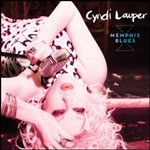 10. Memphis Blues (2010)
10. Memphis Blues (2010)
Starting with 2008’s Shine, Cyndi Lauper would record studio LPs taking her in wildly different directions. Her tenth album, Memphis Blues, would see the singer embrace her inner blues chanteuse as she sings a selection of blues standards and classics. She doesn’t add much to the genre, nor is she a revelatory blues singer, but her usual committed performances make for a fine-to-good album. She joins some essential names like Ann Peebles, B.B. King, Allen Toussaint, and contemporary blues singer Jonny Lang, all of whom add some cred to the proceedings. The album screams vanity project, but it’s done with enough respect and enthusiasm that it works.
9. Detour (2016)
Just as she made a surprisingly credible stab at blues shouting with Detour, Lauper does an outstanding job pretending to be a country singer. The genre’s inherent campiness matches well with her quirks; she’s a great stylist, so the story songs on Detour are right up her alley. Her wide range and ability to adopt various guises mean that she can do the sultry strut of “Walkin’ After Midnight,” the melancholy of “Hard Candy Christmas,” and the goofy comedy of “You’re The Reason Our Kids Are Ugly” with right-on performances. The selections on Detour read like Lauper’s intensive personal collection of country records, and songs like Wanda Jackson’s “Funnel Of Love” and Willie Nelson’s “Night Life” show how influential these songs are in her expansive sound.
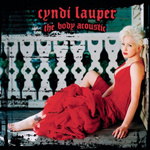 8. The Body Acoustic (2005)
8. The Body Acoustic (2005)
There comes the point in a legacy artist’s career when she looks back at her extensive catalog and decides to revisit it. On The Body Acoustic, Lauper returns to her past hits but removes them from their fuzzy New Wave settings. The thinner, rootsier arrangements and production show that these classic pop tunes had strong structures and catchy hooks. Not just re-recording her big hits, she also includes some more esoteric compositions, like the mystical feminist anthem, “Sisters Of Avalon,” or the obscure “Shine.” Her two best and biggest hits—“True Colors” and “Time After Time”—endure and find new, mournful poignancy with the acoustic production.
7. At Last (2003)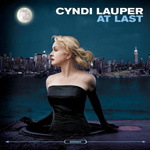
Like most pop stars of her generation, Lauper decided to put together a project celebrating the Great American Songbook with At Last. For the most part, these covers of oft-recorded tunes are respectful, and the album is a sedate affair. Lauper’s virtuoso voice and her pop-singing genius make her a masterful interpreter of these old chestnuts. She doesn’t choose any curios or rarities, so there is a feeling of familiarity with the tracklist; however, her fantastic renditions of these songs are in a class of their own. Listen to Lauper’s take on Etta James’ formerly uncoverable “At Last”; it’s a revelation.
 6. Sisters Of Avalon (1996)
6. Sisters Of Avalon (1996)
One of the more underrated entries in Lauper’s discography, this record sports some of Lauper’s most extraordinary and insightful songwriting. Sisters Of Avalon is a multi-textured, rich album with a beautiful tapestry of autumnal themes and tones. The lyrics deal with some of Lauper’s most personal and intense feelings on social justice. The title track is a rousing feminist hymn that celebrates sisterhood and womanhood; the sinewy “Ballad Of Cleo & Joe” tells the empathetic tale of a drag queen who lives a double life; the groovy ballad “Say A Prayer” takes on the AIDS crisis; “You Don’t Know” is a swipe at political apathy and political ignorance; while “Unhook The Stars” ranks among her best lovelorn pop ballads. The beauty of Sisters Of Avalon is how stylistically diverse and eclectic the sounds are.
5. Bring Ya To The Brink (2008)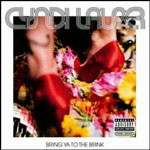
Dance and disco were never far from Cyndi Lauper’s music, even from the beginning. An ally and honorary member of the queer community, Lauper is a significant figure in gay culture. Throughout the 1980s and 1990s, she found some of her biggest hits remixed for the clubs. And when mainstream pop radio ghosted her, dance radio remained loyal. On Bring Ya To The Brink, Lauper emerges as the Queen of the Discos. Working with ace DJs, remixers, producers, and songwriters, she delivers one of her greatest recorded achievements. Though a mainstream pop record, there is still enough praise for DJ and dance culture, so the album becomes far more exciting and intelligent than assembly-line dance-pop records of the mid-2000s. Lauper’s gorgeous voice glides smoothly over the pulsing dance beats and popping beats. “Same Ol’ Story” is a wonderful tribute to ’70s-era Studio 54 disco; the hypnotic single “Into The Nightlife” is a prime example of top-shelf EDM; “Set Your Heart” is a particularly graceful slice of club-pop; the dance-pop balladry of “Rain On Me” is vintage wistful Lauper. Bring Ya To The Brink is an artistic triumph.
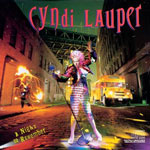 4. A Night To Remember (1989)
4. A Night To Remember (1989)
The last of Cyndi Lauper’s 1980s albums and the last of her big album hits, A Night To Remember, built on her first two albums' commercial and aesthetic successes. She was on a creative roll, which resulted in a very good set of pop/rock tunes that showed off the growing maturity in Lauper’s singing and writing. Working with ’80s dynamic songwriting duo Billy Steinberg and Tom Kelly for the bulk of the album’s tracks, the songs on A Night To Remember are some of her most professional, sleekest material. “Heading West” is a wonderful, regretful song of lost love. The moody synth-pop ballad “Unconditional Love” is a lovely bit of A/C pop with some vaguely paisley-pop echoes. The album's centerpiece is the driving cover of “I Drove All Night,” which boasts some of Lauper’s most impressive, nearly operatic belting.
3. True Colors (1986)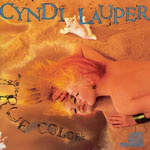
When an artist becomes hugely successful with her debut record, there’s always the risk of the dreaded sophomore slump. She’s So Unusual was such a triumph that anything slightly less impactful would be judged a disappointment. By any account, True Colors would be considered a huge hit. Three of the album’s five singles went to the top 20, with two climbing into the top 5, the title track landing in the pole position. “True Colors,” like “Time After Time,” became Lauper’s second ’80s pop standard, the ballad, adopted by her queer audiences as a hymn for gay rights and the AIDS crisis (Lauper herself uses the song as a rallying cry in her shows when referencing queer rights and AIDS, and named her nonprofit after the tune). Though it would be an intimidating song to cover, Lauper does herself proud with an elegiac version of Marvin Gaye’s “What’s Going On.” True Colors is the archetypical ’80s superstar release with big names like the Bangles, Billy Joel, Aimee Mann, Nile Rodgers, and even Pee Wee Herman popping up. The album doesn’t hit all of the high notes of She’s So Unusual, but it feels like a strong sequel.
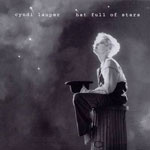 2. Hat Full Of Stars (1993)
2. Hat Full Of Stars (1993)
A decade into her career, Lauper found herself in a different place. Feted as a pop original when she debuted in 1983 with She’s So Unusual, by 1993, she struggled to get her music on the radio. Perhaps freed from the confines of having to craft a hit record, Lauper wrote what is probably her most moving and personal album. Largely ignored by the public, with Lauper expressing mixed feelings over the record’s performances, Hat Full Of Stars is essentially a response to the various social ills broadcast on the evening news in the early 1990s. Working with dance legend Junior Vasquez, Lauper opens the album with the funky club number “That’s What I Think.” Over the chunky beats, the singer expresses angst over urban blight, conveying a wariness. The album’s first single, “Who Let In The Rain,” is a surprisingly subtle, unassuming ballad that floats delicately over a humming synth. The most heartbreaking moment on the album is “Sally’s Pigeons,” a soulful requiem for a friend lost to a botched abortion. Hat Full Of Stars deserved to be a bigger hit, and it’s a shame that it got lost because it’s some of Lauper’s best work.
1. She’s So Unusual (1983)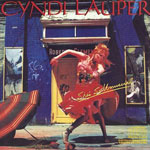
Cyndi Lauper’s debut album is one of the brightest, most effervescent pop records of the 1980s. She became an icon of the decade with the songs and the accompanying music videos. She used the album as a launch pad for a multi-media career, charming audiences by being an eccentric favorite on TV talk shows, award shows, even becoming a minor figure in professional wrestling. She graced magazine covers, and radio couldn’t get enough of her brand of glittering pop. She’s So Unusual is the epitome of fun, escapist pop, but make no mistake: these are brilliantly constructed pop songs. “Time After Time,” with its iconic tick-tock beat, is a classic. A tear-stained, devastating ballad about lost love, “Time After Time” is rightly venerated as an ’80s mainstay. Lauper also excavated a minor pop hit written by Robert Hazard, “Girls Just Want To Have Fun,” which, in her hands, became a joyful, buoyant feminist call to action. She also swipes Jules Shear’s “All Through The Night” and improves on the original. Also, despite being so early in her career, she has the chutzpah to cover Prince with a driving version of “When You Were Mine,” which is a hearty pop holiday when delivered by Lauper. She’s So Unusual is an almost-perfect record, one that shows off different sides of Lauper’s estimable talents.